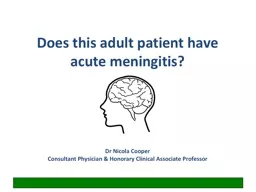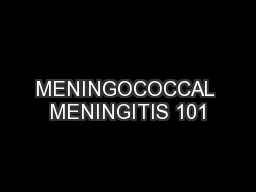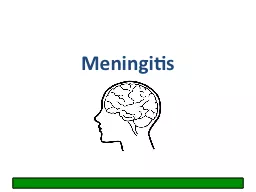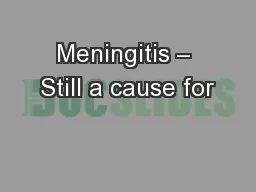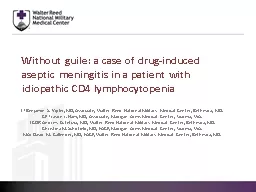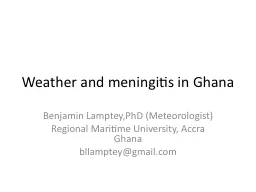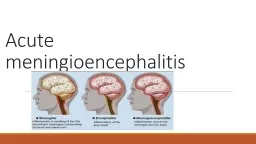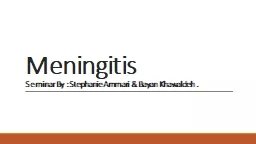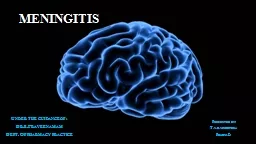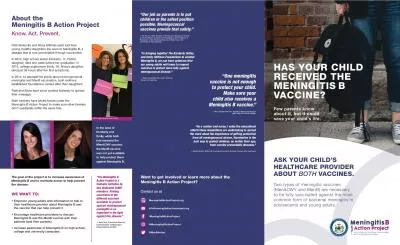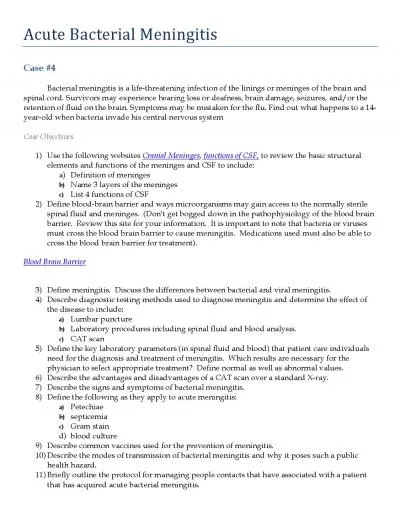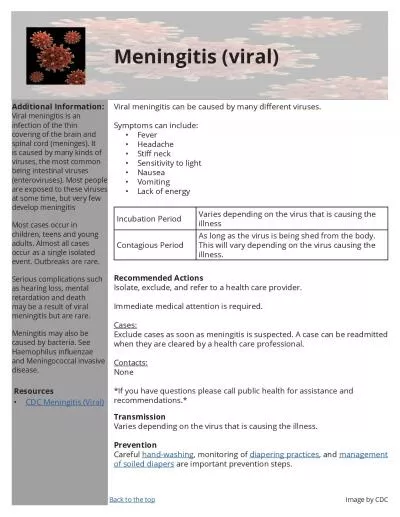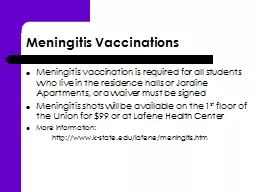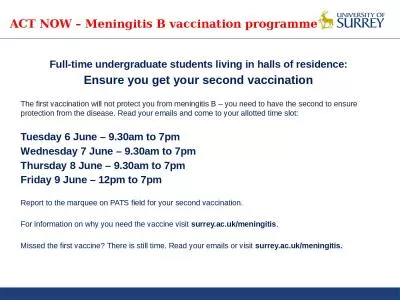PPT-Does this adult patient have acute meningitis?
Author : mitsue-stanley | Published Date : 2019-12-09
Does this adult patient have acute meningitis Dr Nicola Cooper Consultant Physician amp Honorary Clinical Associate Professor Scenario A 30yearold woman was admitted
Presentation Embed Code
Download Presentation
Download Presentation The PPT/PDF document "Does this adult patient have acute menin..." is the property of its rightful owner. Permission is granted to download and print the materials on this website for personal, non-commercial use only, and to display it on your personal computer provided you do not modify the materials and that you retain all copyright notices contained in the materials. By downloading content from our website, you accept the terms of this agreement.
Does this adult patient have acute meningitis?: Transcript
Download Rules Of Document
"Does this adult patient have acute meningitis?"The content belongs to its owner. You may download and print it for personal use, without modification, and keep all copyright notices. By downloading, you agree to these terms.
Related Documents

